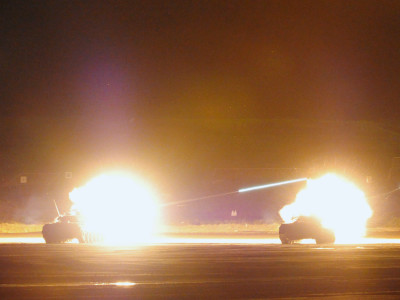Do the world's best night vision goggles used by the US military even work in the dark, where there is no light at all?

The military employs night vision goggles and night vision cameras packed with cutting-edge technology to understand the surrounding situation in dark places where nothing can be seen with the naked eye.
Testing The World's Best Night Vision Goggles - YouTube
Just as the human retina sees objects through the collision of photons, a camera captures photons with an image sensor and converts them into electrons to capture images.

Therefore, it is difficult to take pictures with a camera in dark places.

Therefore, night vision devices such as night vision goggles and night vision cameras were developed to help people see things in dark places. There are three main categories of night vision devices. The first is a type of night vision device called 'ACTIVE ILLUMINATION', which emits invisible near-infrared rays and photographs the surrounding area with a camera that can capture the reflection.

Near-infrared rays cannot be seen with the naked eye, but the mechanism itself of ``irradiating light and seeing things by its reflection'' is no different from headlights or flashlights. It is the simplest and cheapest category of night vision devices, and is used in general night vision goggles and surveillance cameras that can be purchased for around tens of thousands of yen.

Although it's cheaper, it has problems such as ``the subject looks like it's being zoomed'', ``it's difficult to focus'', ``the image is very blurry'', and ``because you're looking at an image taken with a camera, there is a lag of several tens of milliseconds compared to the movement in the real world.'' There are problems such as 'the area where near-infrared rays are emitted' and 'you can only see the area that is irradiated with near-infrared rays.'

Veritasium reporter Derek Muller put on active illumination night vision goggles and tried driving a car on the grounds of a naval facility with no moonlight or streetlights.

Mr. Muller's field of view looks like this. It's difficult to see perspective, and the images you see are blurry, making it extremely unsafe to drive.

'If we didn't have someone to direct us from behind, we would have crashed a lot,' Muller said.

In addition, active illumination is easily detected by external enemies, so it can hardly be used by the military.

A category of technology called ``IMAGE INTENSIFICATION'' is widely used in night vision goggles for military purposes.


In image intensification, photons entering the tube first strike a thin plate made of a semiconductor or alkali metal called a photocathode. A photocathode has the ability to emit electrons when hit by photons, which convert photons into electrons. The emitted electrons are then accelerated by the voltage in the vacuum tube and hit another thin plate called a 'microchannel plate.'
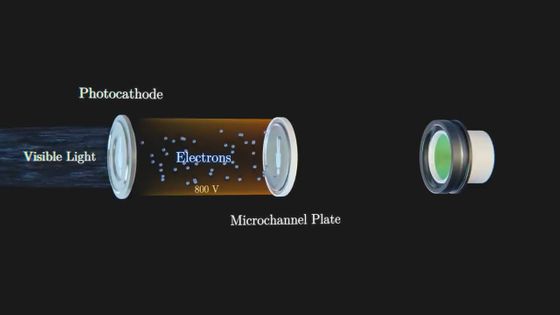
Macro channel plates are generally made of an insulator such as glass and have approximately 6 million tiny holes.

This hole is tilted at a 5 degree angle, and the incoming electrons proceed while colliding with the walls.

When electrons hit a wall, more electrons are emitted from the wall and amplified.
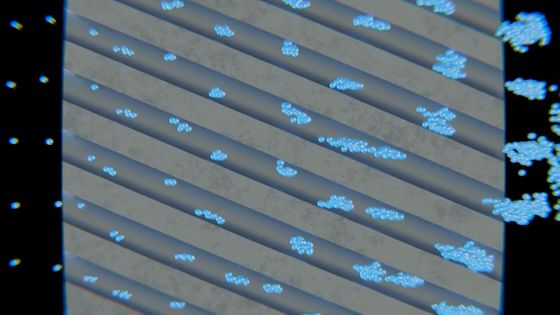
The amplified electrons are further accelerated in a vacuum tube and collide with a ``phosphor screen''.
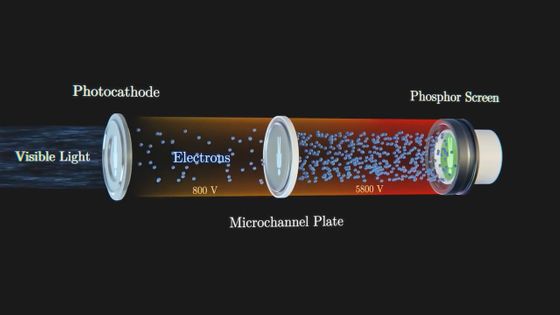
Here, the energy of the electrons is converted into visible light and becomes visible.

In the past, green fluorescent screens were used, so many people associate green vision when they hear military night vision goggles.

However, in recent years, it has been upgraded to a white phosphor, so the visibility has become pale.
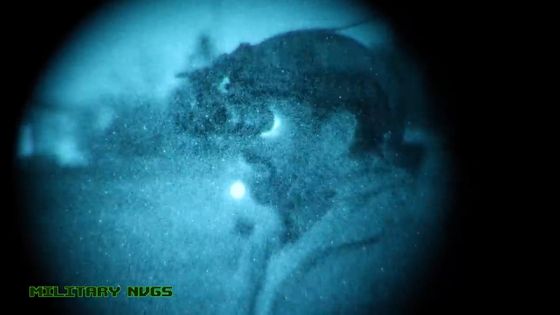
Mr. Muller installed the PVS-31A and tried driving a car in pitch darkness again.

Then, Mr. Muller muttered, ``Oh my God, it's literally like day and night,'' and started driving confidently. He was able to drive the car without any fear, even though earlier he could not move it without instructions, and was able to slip between two cones.

Actually, it looks like this when shooting through night vision goggles equipped with image intensification.

You can even see distant buildings and trees.

Image intensification uses an analog mechanism to amplify incoming photons, without using a camera or display. Therefore, the field of view moves with the wearer of the night vision goggles, causing almost no delay, and the weight of the main body is kept light so that it can be worn for a long time.

The US Navy also has night vision goggles called

When you reproduce the field of view of GPNVG-18, it looks like this. It is the world's most expensive night vision goggle, priced at over $40,000 (approximately 6 million yen) online, and was used

Mr. Muller then conducted an experiment to check the performance of night vision equipment at a test site located 100 meters underground at the naval base.
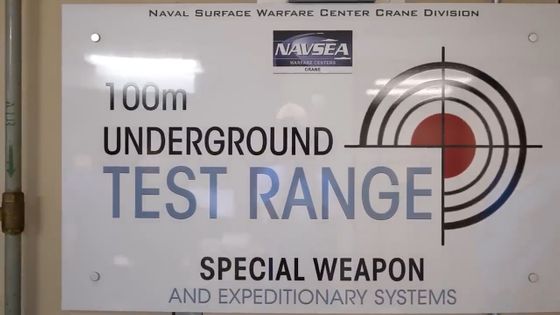
It seems that it is usually used for testing weapons, but it is also possible to completely block incoming light by sealing it.

This time I will also cook smoke.
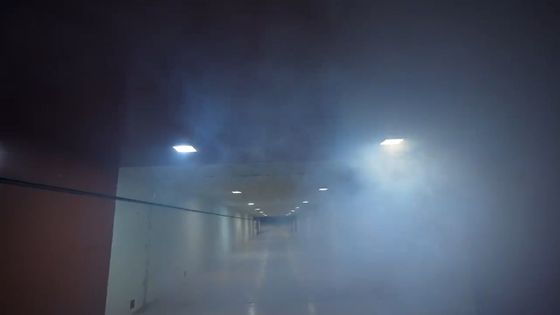
Mr. Muller wearing PVS-31A equipped with image intensification.
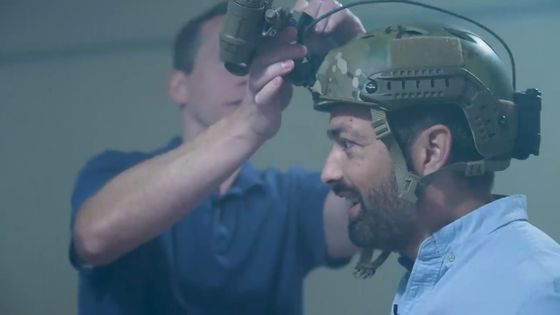
Mr. Muller stands by in the center of the room.
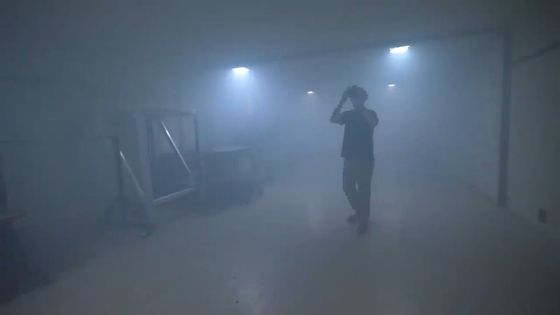
The lights went out and it was pitch black.
Mr. Muller's field of view looks like this. Although there is a small amount of light emitted by the microphone, you can hardly tell what is where, just a few glowing dots, similar to snow or the night sky.
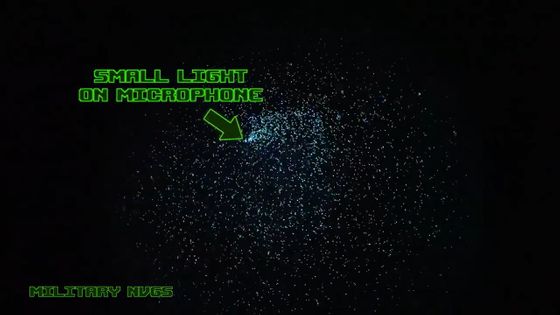
This small light is said to be generated due to analog processing of electrons emitted from the goggle body due to thermal energy and electrons generated by the electric field.

However, after a while, a shape that resembled a human face appeared in front of me. This is because the small amount of light emitted by the goggles hits the face of the person standing in front of you, thereby creating photons.
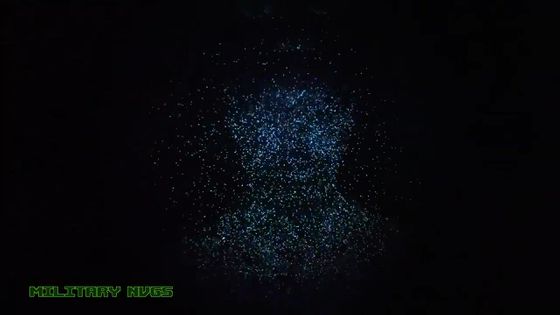
One of the weaknesses of image intensification is that 'it amplifies existing light, so it does not work in places where there is really no light.' Therefore, it is said that active illumination, which emits near-infrared rays, makes it easier to see the surroundings.

However, the third category of night vision equipment, ``THERMAL IMAGING'', is most effective in truly dark places.
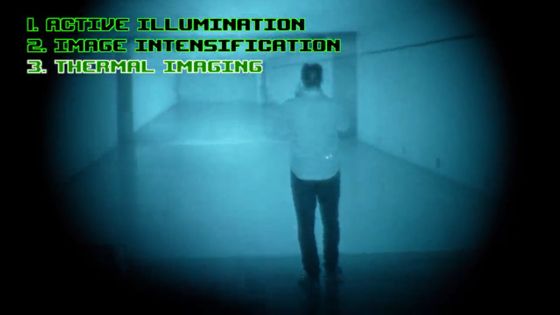
Of the light rays, visible light and near-infrared rays are reflected by objects, but far-infrared rays that exceed near-infrared rays are radioactive, and most objects emit far-infrared rays. Thermal imaging detects this far-infrared rays and uses them for night vision.
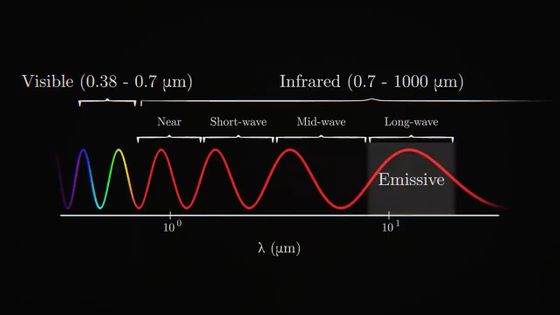
This is what it looks like when photographing the underground experiment site using thermal imaging. You can clearly see people and the structure of the room even in the dark.
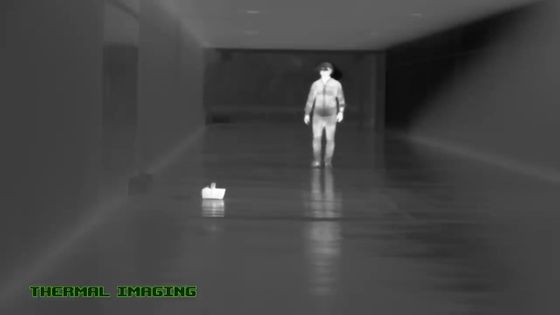
Thermal imaging is useful not only in darkness, but also in detecting landmines buried in the ground.
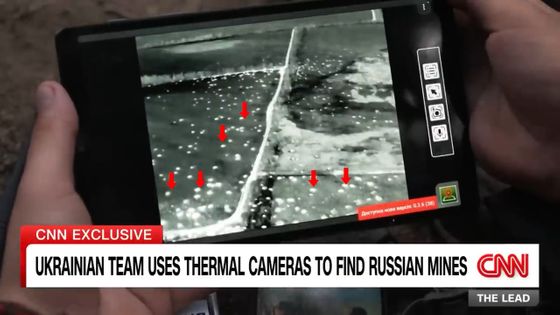
Another major advantage of thermal imaging is that it is possible to obtain clear images even from a considerable distance.

However, they do not emit heat, making it impossible to read signs, and they also have the disadvantage that they are too large to carry and consume a lot of power. Each of the three categories of night vision devices has its own trade-offs in functionality.
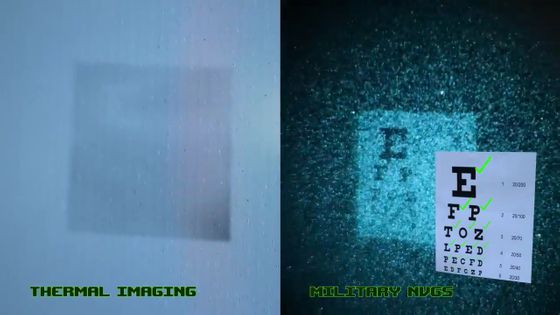
Third-generation night vision devices such as PVS-31A were developed in the 1980s, but researchers are still making improvements at the time of writing the article.
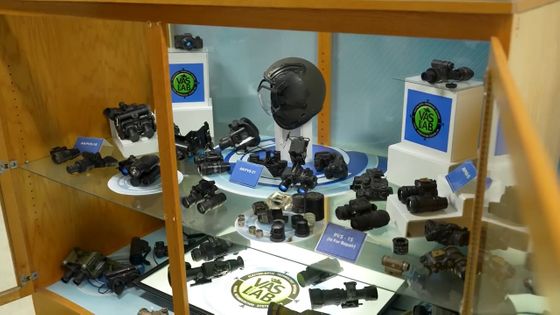
A forum related to this article has been set up on the GIGAZINE official Discord server. Anyone can write freely, so please feel free to comment!
• Discord | 'Have you ever used night vision goggles?' | GIGAZINE
https://discord.com/channels/1037961069903216680/1172112179361747065
Related Posts:


